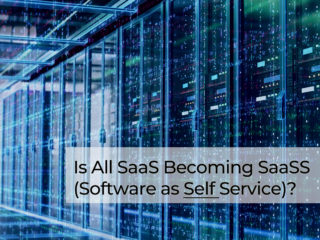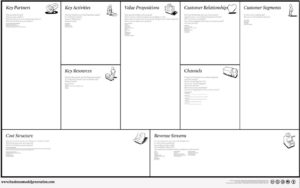
Lockdown is pushing the B2C ecommerce model into B2B enterprise sales. Is XaaS becoming XaaSS? What are the marketing implications of that business model shift? And where will it lead next?
Everything-as-a-Service – XaaS – business models have made it possible for the developed world to endure this pandemic in relative safety without wrenching hardship. We have Zoom sessions at our dining tables, check Slack on our phones, order Amazon groceries and watch Netflix after dinner.
Meetings, messages, munchies and movies, all as-a-service, remotely, over the internet.
FORTUNE’s Jeremy Kahn writes, quoting McKinsey, that online grocers have seen spikes of 700% driven by social distancing and panic buying. He suggests that many consumers have changed their behaviors for the long term.
There’s a lot of talk of other aspects of lockdown effect that people are not likely to give up easily. Working from home. Virtual events. Home cooking. As sick as we are of being cooped up at home, we haven’t complained about giving up commuting, parking, flying and hotels.
Could all B2B software become self service software?
VentureBeat columnist David McFarlane suggests that the Covid lockdown is pushing the remote ecommerce model much deeper into enterprise technology sales.
What do CEOs need to re-imagine in their business to prepare? McFarlane says first and foremost the Covid era is a direct-to-customer world where vendors may be literally delivering offerings right into customers’ homes.
For B2B, McFarlane says that means a self-serve experience with a consultative sales model, consumable over the internet. In just the same way you signed up for Zoom on a weekend with a credit card, you could remotely subscribe to, and deploy, your next enterprise supply chain management system.
Let that sink in. Enterprise software sold in an ecommerce model. No in-person ERP selling. No implementation and training teams on site for new phone systems. Software as a Self-Service – SaaSS.
What are the marketing implications for a shift to SaaSS?
Justin Lokitz, author of the forthcoming Wiley book Business Model Shifts, mapped out the broader as-a-service shift on the familiar Business Model Canvas for a small group of marketers the week I wrote this. It was a useful lens through which to think about McFarlane’s proposition.

Business Model Canvas
Some B2B SaaS vendors might feel they are well along the path because cloud computing has shifted big parts of their Canvas already. But if we look at the lockdown effect as a progressive, not-easily-reversed phenomenon in the market, a partial shift is the equivalent of handing over the market to vendors who can master it. This is an all or nothing deal:
- Sales and marketing partnerships would change dramatically. Sales channels, even for large enterprise software deals, would shift to ecommerce.
- Implementations would be guided remotely, or customers would do their own implementations. User on-boarding would be dependent on training that is virtual or on-demand video.
- Customer operations staff would change to accommodate the new SaaSS model. Higher skilled IT staff for buyers would take the place of on-site vendor technicians for sellers. Those IT people would set new buying criteria.
There’s a bright side. Self service is highly scalable and low cost. Customer service call centers have long understood the value of even a simple automated system to handle frequent yet easy questions.
But self service can be impersonal. Large enterprise technology sales today are made or lost on personal relationships. Perhaps seven-figure ecommerce sales could eventually be made more personal with AI. Meanwhile, it would require a whole new style of human consultative selling.
Certainly, in light of the changes outlined above, marketing value propositions would change – especially if high-touch service is now a pillar of your marketing messages.
The sales cycle would be altogether different were you to erase flying, lunching, PowerPoints and live demos. Even demand generation would change.
Where does XaaSS lead next?
At the foundation of this business model shift are new customer needs. And just ask any product manager: customer needs are at the foundation of every business. Economic downturns have been the birth of some as-a-service success stories including Airbnb, AWS, Slack, Uber and Venmo.
Vendors who successfully transition to a touchless business will be able to offer their self service model as a platform for others. Self service platform as a service – SSPaaS. If your company isn’t an early adopter of the self service model, you can wait and be an early majority renter.
Either way, you may want to start thinking about having the right people in place to make it happen. The platform itself would of course be self service. In other words, a Self Service Platform as a Self Service – SSPaaSS.